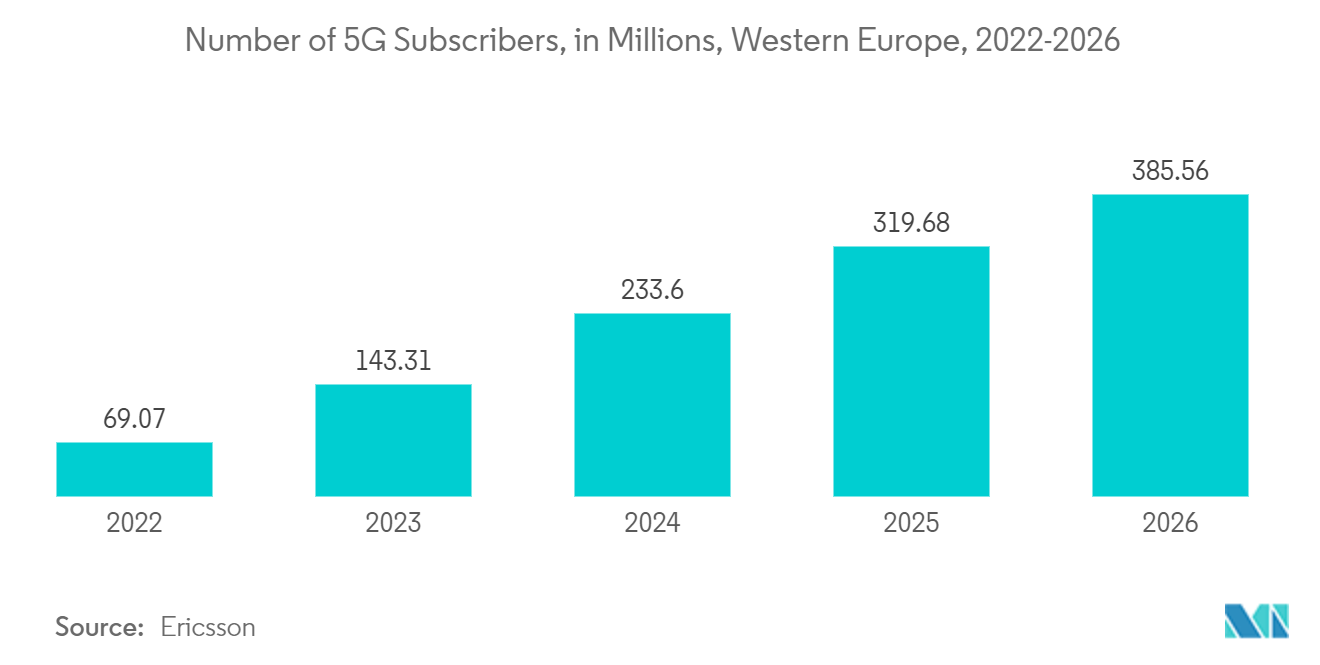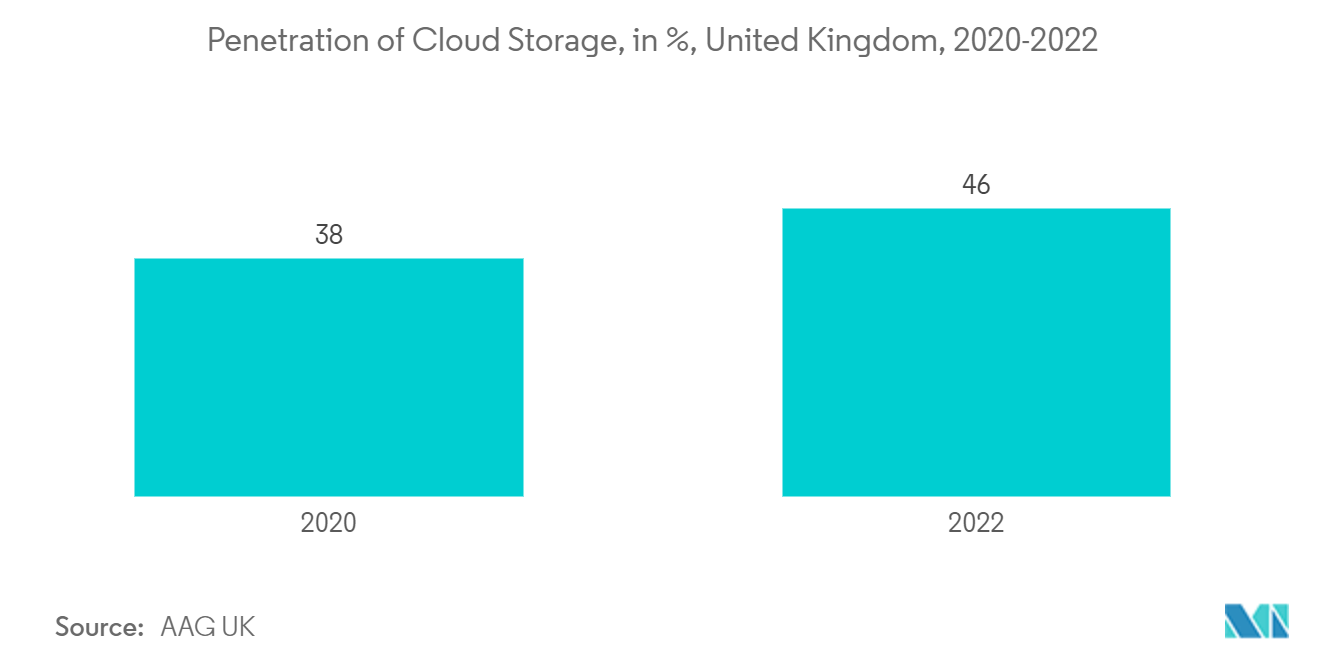Market Trends of Europe Data Center Storage Industry
IT and Telecom to Hold Significant Share
- In Europe, players in the telecommunications industry are faced with shrinking revenues and profitability, as well as the effects of regulatory pricing intervention and consolidation. The rapidly increasing 4G penetration and the 5G wave are encouraging telecom vendors to invest in the data center market. Swedish network provider Net4Mobility, a joint venture between local carriers Tele2 and Telenor, had plans to connect 90% of the nation's population to its 5G network by the end of 2023.
- The Netherlands has also quickly modernized with cutting-edge technology, solidifying its position as one of Europe's leading telecom markets. The goals of the EU Gigabit Society include providing all homes access to broadband networks with speeds of at least 100 Mbps, and the vast majority should be taking advantage of 1 Gbps by 2023. These goals are supported by the Dutch government as well.
- 5G is close to seven times better in terms of throughput compared to 4G, at 10 Gbs compared to 1.45 Gbs. With NVMe or SSD over HDD, such enterprise-level technology allows significant I/O throughput. The demand for NVMe is increasing in SSD servers and storage appliances, which is expected to drive the market during the forecast period.
- The transition to PCIe 4.0 technology is in full swing, and KIOXIA Europe GmbH is leading the way forward. Recently, the company announced that its lineup of CM6 and CD6 SeriesPCIe 4.0 NVM Express (NVMe) enterprise and data center solid state drives gained compatibility approval with Super Micro Computer Inc.'s PCIe 4.0-based platforms, including a wide range of enterprise-ready rackmount systems encompassing Ultra, WIO, BigTwin, FatTwin, SuperBlade, 1U/2U NVMe all flash arrays, GPU accelerated systems, and Super Workstations.
- In another recent development, Exascend and GLYN joined forces to bring Exascend's cutting-edge flash storage solutions to Europe, with GLYN distributing products in Northern, Central, Eastern Europe, and Benelux countries. This collaboration empowers businesses throughout Europe to leverage the potential of next-generation flash storage technology.

United Kingdom to Witness Significant Growth
- Brexit has shaken the UK cloud market, causing uncertainty for cloud providers regarding customer data storage and retrieval. As a result, European companies reliant on UK data centers are migrating their operations to the United Kingdom and other EU countries. Despite this, the cloud market in the United Kingdom is thriving. The surge in demand for cloud services in 2020 led to the launch of 10 new services, including cybersecurity offerings by Microsoft. AWS and Microsoft Azure remain the leading players in this growing market.
- The demand for edge data centers is growing with the implementation of commercial 5G networks in the United Kingdom. The United Kingdom is one of the most digitally advanced economies. The government invests in 5G and next-generation digital technologies to support businesses. In line with consumer demand, the cloud computing segment is expected to shift inherently to include the use of multi-cloud in enterprises.
- According to the Federation of Small Businesses (FSB), as of 2022, there were 5.5 million small businesses in the United Kingdom, accounting for 99.2% of the total business in the region. In addition, SMEs account for three-fifths of the employment and around half of the private sector turnover in the country. A growing shift toward hyperscale data centers to efficiently support robust, scalable applications is anticipated to propel the data center storage market in the United Kingdom.
- With data center providers increasing their digital infrastructure, the demand for storage equipment is expected to increase. Equinix Inc., a digital infrastructure company, announced its plans to build a new International Business Exchange (IBX) data center in Salford, Manchester. Equinix also announced a total investment of USD 165 million and an additional USD 1 billion in the digital infrastructure.


